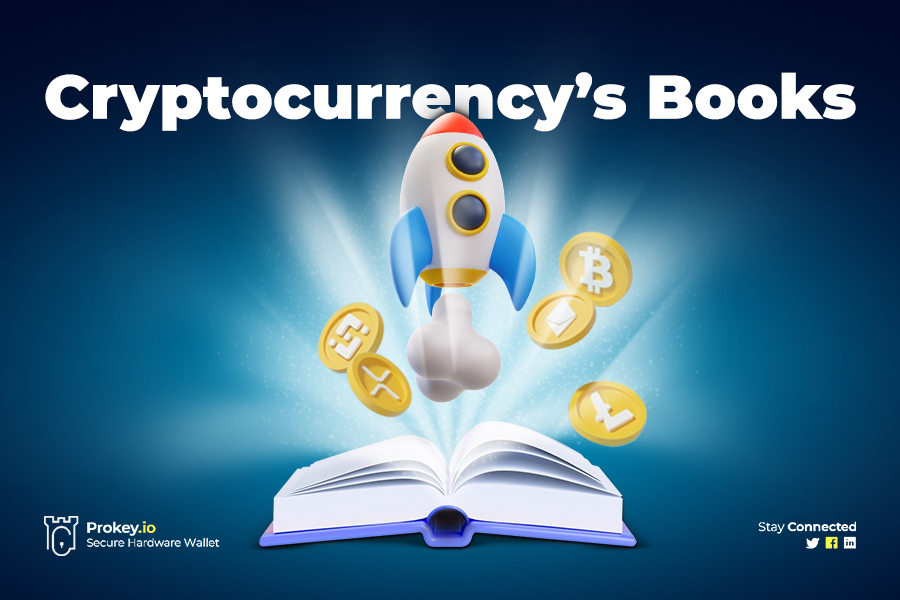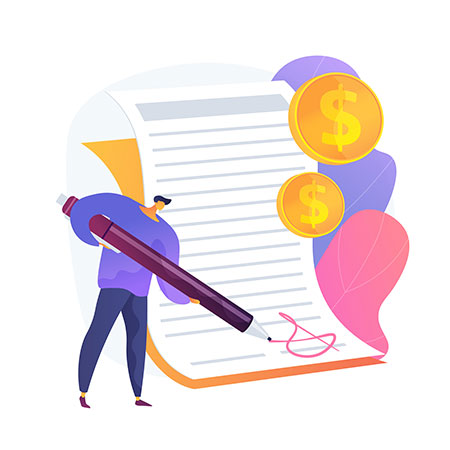Best Books on Cryptocurrency till 2022


Looking for some reading material on cryptocurrency, and blockchains? We got you, below is a list of all useful books categorized under the investment, technical analysis, and programming topics. Whatever you aim to get more specialized in, you will surely find a book suited best to your needs below.
Best Books for Investing in Cryptocurrency
1.Cryptocurrency Investing for Dummies
The "Cryptocurrency Investing for Dummies" book is yet another splendid book of the "for dummies" series. The book covers almost all the fundamentals of blockchain technology, the peer-to-peer transaction model, and decentralization as a whole. As investing your hard-earned money in cryptocurrencies requires some prior knowledge about blockchains, and the technology behind them, this is a perfect book for getting your head around digital money.
The contents of the book will provide a thorough understanding of the risks involving cryptocurrency investments, blockchain technology as a whole, cryptocurrency wallets, mining crypto, crypto futures, short, and long-term trading strategies, and a lot more useful introductory information regarding cryptocurrency investment.
2. Cryptocurrency Master: Everything You Need to Know About Cryptocurrency and Bitcoin Trading, Mining, Investing, Ethereum, ICOs, and The Blockchain
The book is divided into four major sections; including "The Art of HODLing", "The Crypto Mining Mindset", "The ICO approach", and "Cryptocurrency 101". The four sections successfully provide an insightful perspective into the way cryptocurrencies work, how to store cryptocurrencies, HODLing strategies, double-spending, Proof of Work, mining bitcoin, and altcoins, Bitcoin mining software, Bitcoin mining pools, ICO presales, choosing the winning ICO, and ICO KYC compliances.
The chapter on cryptocurrency 101, contains some fundamental topics on cryptocurrency investment, including transactions, wallets, mining, exchanges, tradability, trading strategies, and trading indicators.
3.Digital Gold: Bitcoin and the Inside Story of the Misfits and Millionaires Trying to Reinvent Money
Written by a New York Times technology, and business reporter, the book provides insight into how millionaires have attempted to recreate money in a different way as we know it. The idea of digital money created by blockchain technology, and adopted by people from all over the globe has been suitably covered by the author, who believes crypto to be more than just a technology hype, but a decentralized financial system seriously threatening the existence of banks, and financial institutions, and their mission as a whole.
The book is ideal for every investor who wishes to get a more detailed understanding of how cryptocurrencies came into being and the most important timelines in the history of digital gold.
4. The Basics of Bitcoins and Blockchains; An Introduction to Cryptocurrencies and The Technology Behind Them
Want to know more about the basics of cryptocurrencies and blockchains? This book's just for you! Not only does it provide an insight into the history of Bitcoin, Ethereum, and other cryptos, it also makes sure to gather useful information about mining, buying, and selling BTC. But that's not all! Users are sure to get a hint about how crypto markets work, the Bitcoin effect, and the risks regarding trading cryptocurrencies.
Cryptocurrency Books for Technical Analysis
1. Technical Analysis of The Financial Markets: A Comprehensive Guide to Trading Methods and Applications
The above book specializes in futures, and stock markets, providing an insight into the application of technical analysis on them. There are multiple examples of new computing methods executed by financial analysts in the financial markets today, and a handful of chart patterns, and candlesticks examples you would find useful for analyzing charts.
A number of topics covered by the book include technical versus fundamental forecasting, analysis versus timing, flexibility and adaptability of technical analysis, Dow theory, candlesticks, arithmetic versus logarithmic scale, the definition of trend, support and resistance, the fan principle, Gann and Fibonacci fan lines, price gaps, price patterns, head and shoulders pattern, and the rectangle formation.
2. Trading: Technical Analysis Masterclass: Master The Financial Markets
This book is perfect for any beginner-level trader to gain a thorough understanding of price movements, chart patterns, and executable trading strategies. It also emphasizes the important effect of emotions in a financial market, and how to handle them in the best way. Comprising three sections, the book provides ready-to-use information on technical, and price analysis, while the second chapter focuses on chart patterns, and how to read them, while the third, and the last chapter has been dedicated to helping readers form their own trading strategies, and implement them in financial markets.
3. Technical Analysis Explained: The Successful Investor's Guide to Spotting Investment Trends and Turning Points
The technical analysts' bible, the above book covers some very important topics regarding cryptocurrencies, including trends, technical indicators, especially Pring's new K indicator, price patterns, candlestick charts, RSI, and sentiment indicators.
The Best Cryptocurrency Books for Developers
1. Architecture for Blockchain Applications
Aimed at software architects, and developers, the book is a bespoke source of information on Blockchain technology. There is detailed information regarding the Bitcoin, Ethereum, and Hyperledger Fabric blockchains, and the applications based on the mentioned blockchains.
A big part of the book is dedicated to the design process of blockchains, and their role in software architecture. While another part covers the non-functional side of blockchain-based apps, including costs, availability, performance, and security.
The book starts with an introduction part including subjects such as “What Is Blockchain and Why Should I Care?”, “Blockchain-based Applications”, “Blockchain Functionality”, “Blockchain Architecture Design”, followed by the Existing Blockchain Platforms part containing information about the Bitcoin, Ethereum, and Hyperledger Fabric blockchain, the Varieties of Blockchains part includes “Fundamental Properties of Blockchain”, “Decentralization”, “Ledger Structure”, “Consensus Protocols”, “Anonymity”, and much more useful information.
The part on Architecting Blockchain-Based Applications includes subjects such as “Blockchain in Software Architecture”, “Design Process for Applications Blockchain”, ``Blockchain Patterns”, and “Model-Driven Engineering for Blockchain Applications”.
2. Blockchain, Blueprint for A New Economy
A general introduction to blockchains, and what their mission is, is necessary even for developers. Blockchain, Blueprint for A New Economy is a book targeted at those readers looking for an exclusive guide on the technology behind the world’s cryptocurrencies, and what will become of it.
The book contains three main sections namely Blockchain 1.0, Blockchain 2.0, and Blockchain 3.0; each focusing on a different aspect of Blockchain technology. Blockchain 1.0 includes topics such as blockchains, different protocols, currencies, double-spending, and Byzantine General’s computing problem. There are mentions of how cryptocurrency works, eWallet services and personal cryptosecurity, and merchant acceptance of Bitcoin. The second part, called “Blockchain 2.0”, contains information on financial services, crowdfunding, Bitcoin prediction markets, smart property, Smart Contracts, Blockchain 2.0 protocol projects, wallet development projects, Ethereum; Turing-complete virtual machines, DAOs, and DACs, and many more.
The Blockchain 3.0; Justice Applications Beyond Currency, Economics, and Markets, on the other hand, offers an insight into the extensibility of blockchain technology concepts, fundamental economic principles; discovery, value attribution, and exchange, and how blockchain technology could be used in the administration of all quanta, how blockchain layer could facilitate big data’s predictive task automation, Blockchain neutrality, digital divide of Bitcoin, hashing plus time-stamping, and proof of existence.
3. Solidity Programming Essentials: A Beginner’s Guide to Build Smart Contracts for Ethereum and Blockchain
A perfect book about learning solidity, the native programming language of Ethereum, and developing smart contracts, the book includes ten professionally-written chapters, namely the introduction to Blockchain, Ethereum, and Smart-Contracts, Installing Ethereum and Solidity, Introducing Solidity, Global Variables, and Functions, Expressions, and Control Structures, Writing Smart-Contracts, Functions, Modifiers and Fallbacks, Exceptions, Events, and Logging, Truffle Basics, and Unit Testing, and Debugging Contracts.
The first chapter mainly includes topics on the Blockchain, Cryptography, Symmetric Encryption, and Decryption, Asymmetric Encryption and Decryption, Hashing, Digital Signatures, Ether, and Gas. The second chapter, on the other hand, includes useful information on Ethereum networks; main, and test networks with that Ropsten, Rinkeby, Kovan, Private, and Consortium networks, Geth, installing Geth, Solidity compiler, Mist wallet, and MetaMask.
The third chapter is dedicated to an introduction to solidity with information on Ethereum Virtual Machine, Solidity, and Solidity files, Pragma, Comments, state variables, structure, modifiers, events, enumeration, functions, data types in solidity, storage, and memory data locations, integers, boolean, arrays, fixed arrays, dynamic arrays, and mapping.
The fourth chapter is mainly focused on variable hoisting, variable scoping, type conversion, Block and transaction global variables, and the difference between tx. origin, and, msg. Sender. The fifth chapter, on the other hand, contains useful information on the while loop, the for loop, the do...while loop, the break statement, the continue statement, and the return statement.
The sixth chapter includes detailed information on smart contracts, constructors, encapsulation, polymorphism, method overriding, and abstract contracts, while the seventh chapter is written on function input and output, modifiers, the view, constant, and pure functions, and the address functions. The eighth chapter includes information on error handling, events and logging, the ninth chapter focuses on application development life cycle management, truffle, and testing with truffle.
The tenth and the last chapter is debugging contracts, and therefore includes debugging, the matrix editor, using events, and using a block explorer.
Conclusion
Those were only several of the many wonderful books you could find on cryptocurrency and blockchains. Whether it is investment techniques, developing smart contracts, dApps, protocol, or wallet projects, you will find something of use in the above list of books.
Although we believe the proposed books on technical analysis would cover almost any topic you were looking for, the same cannot be said about the three books suggested for developers; there is an ocean of information out there on developing blockchain-based projects, and apps, waiting to be explored.
How Do You Know Your Prokey Wallet Is Genuine?



